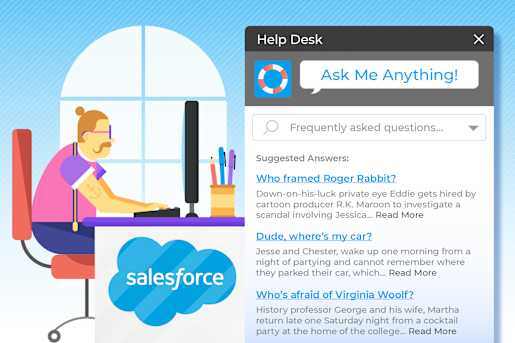Lately, we’ve been sharing some of our 2024 predictions for the translation industry. One of our predictions is that AI-powered technology will become even more attractive to companies and will essentially become a requirement to hold a competitive advantage in the industry. 2023 was a year that showed both the extraordinary capabilities of Generative AI, specifically Large Language Models, but it also revealed many shortcomings and the need for carefully planned development and deployment decisions.
In 2024, we will likely see the impact on the translation industry grow exponentially, touching all stages of the localization journey. While the focus to this point has been on text transformation and generation, the development of multimodal models could start to impact areas like multimedia localization, voice over, and image translation too.
LLM Predictions for 2024
Smartling’s VP of Machine Translation and AI, Olga Beregovaya, shared some of her predictions for the translation industry in 2024:
- Better support for long-tail languages: We’ve already seen that LLMs can create training data for under-resourced languages using patterns from adjacent languages, making automated translation available and of higher quality for a larger number of locales. In addition, because LLMs can adapt quickly to locale and geo-specific language flavors, translation will be able to cater to more diverse audiences, such as ethnic and social groups.
- New opportunities for accessibility: AI will enable companies to adapt their products and services to audiences of all backgrounds and capabilities. For instance, a multimodal Large Language Model can narrate written text for visually impaired, and transcribe for hearing impaired. AI will open career opportunities for those with learning disabilities by acting as various kinds of co-pilots and learning assistants.
- Greater regulations and restrictions: 2023 showed that lack of regulation and legislative measures around Generative AI can bring about detrimental consequences. Mis-use of Generative AI in the language space may be one of the most dangerous areas as it can give way to things like factual inaccuracy or a potentially detrimental decision, such as the infamous case of lending decisions discriminating against certain ethnic and social groups. We expect to see more international regulatory bodies and guardrails around development and use of AI models this year.
- Smaller and smarter models: We’ve started to see very strong performance from smaller models, trained on smaller datasets for specific tasks (such as Llama2 for specific languages and translation tasks). We predict that many more such smaller models will be available in the coming year, trained by technology providers or LSPs for specific languages and domains.
- A continuing role for NMT: Even with the hype around LLMs, traditional neural machine translation will continue to play a role in the localization space. In particular, we have seen continued use in customization for specific domains. Fine-tuning LLMs is still a complex and expensive task with a lot of unknowns and trial-end-error, whereas training NMT is a well-established and successfully performing approach that is also highly cost-effective. Eventually we will see the convergence of the two approaches, and it can possibly happen in 2024.
Using LLMs across Smartling
We enjoyed Olga’s predictions so much that we decided to ask a few more of our colleagues to reflect on how LLMs have impacted their roles, the translation industry as a whole, and their expectations for the coming year.
Let’s see what they had to say:
Benjamin Loy, Principal Engineer
LLMs generated a new inflection point of automation for the entire translation industry. Fundamental problems in automating language transformations are finally within reach of being partially or fully solved via these new technologies.
Alex Yanishevsky, Director of AI Development
LLMs have profoundly changed my role, but even more importantly, they have dramatically changed our entire industry. As I look into next year, my goal is: how do I best advise the client, i.e. of the myriad of possibilities we can use LLMs for, which ones provide the highest value and move the dial the furthest for the cost that is incurred.
Chris Wyant, Assoc. Director of Language Services
LLMs make automated translation smarter, faster, and more effective than ever before. These leaps in technology are allowing our translators to work more efficiently than ever before. Linguists can upskill and expand their careers by embracing these tools. Our data shows that productivity is up and that linguist income has not taken the hit many had feared it would.
Grace Feeney, Sales Development Manager
LLMs have revolutionized the way my team approaches email creation. By aggregating data from various sources about the prospect and the company's objectives, LLMs empower my team to act as editors rather than doing content creation from scratch.
Nicole Michel, Product Manager - Machine Translation
After the initial hype, it became clear that LLMs are really good at specific tasks and very valuable for certain Use Cases, but they aren’t generalists and won’t replace neural MT just yet, especially when MT workflows are also leveraging Glossary, TM and/or custom-trained engines. Hallucinations, costs and the need to engineer a separate prompt to get the desired results for each use case are currently limiting wide scale adoption of LLMs in many organizations.
Andriy Furdylo, Team Lead Engineer
I have noticed many attempts to incorporate Language Model Models (LLMs) in various business fields, but not all of them have been successful. If you know how to ask the right questions, you can achieve excellent outcomes. They are still just an assistant, albeit a highly intelligent one.
Max Sogin, VP of Engineering
60% of the engineering team uses ChatGPT or GitHub Copilot daily. We have found that Trivial prompts are significantly less stable and performant than sophisticated ones, which undergo multiple iterations of testing and refinement. I am curious to see whether prompts ultimately become the subject of IP. We are also keeping an eye on smaller LLMs like LLama and Alpaca that can offer cost management and in-house (smaller) models. LLMs are getting very expensive at large volumes/scale.
It’s clear that LLMs have had a big impact on Smartling over the past year as we’ve embraced its use in both our product and in day-to-day roles. Overall, we definitely can call 2024 “The Year of Responsible AI”, where the benefits of innovation will be harvested globally in a responsible, ethical and most efficient way. We look forward to partnering with our customers to explore these new capabilities together this year.





